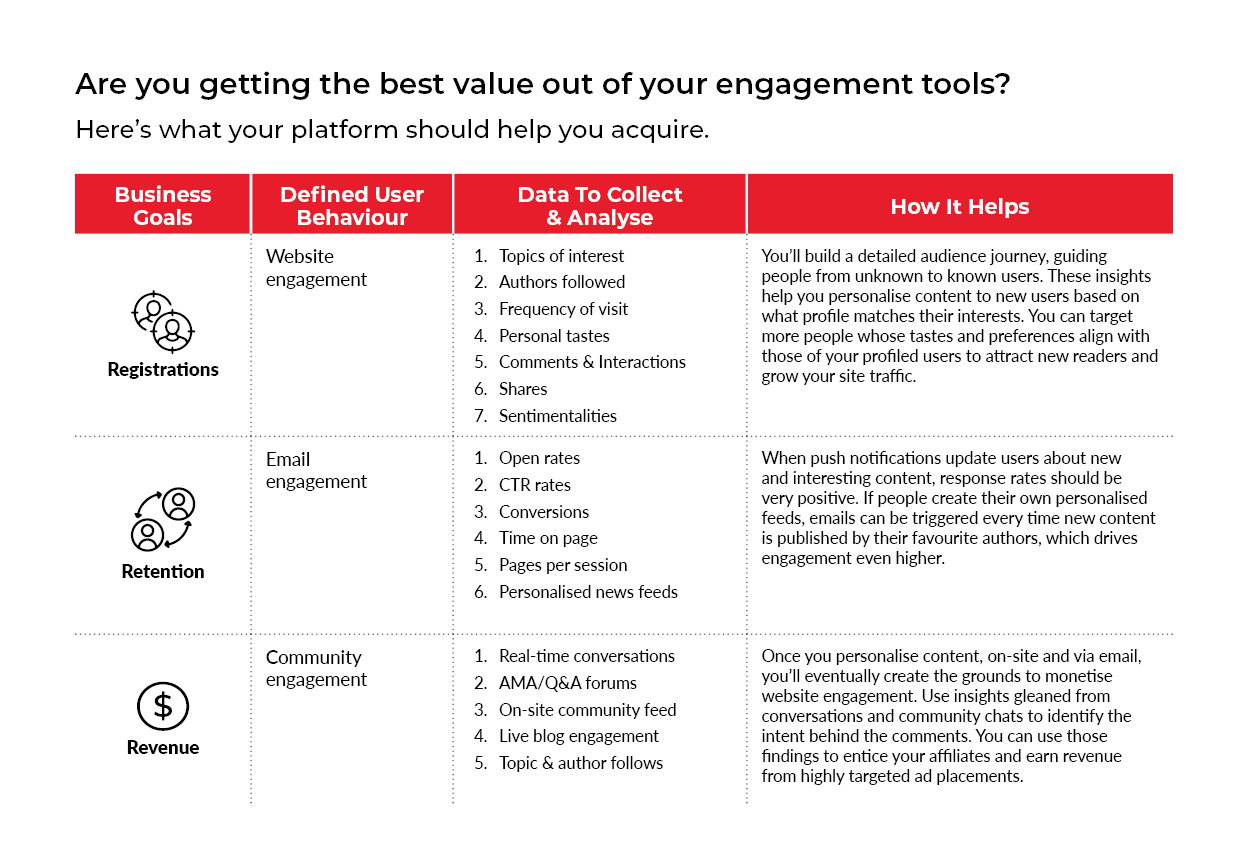If you’ve invested in an audience engagement solution, you’re probably well aware of how important the data you collect from the platform will be for the future performance of your business. Insights into how your existing users engage with content and the community built around it allows you to optimise your strategy. An optimised content strategy means you’ll produce more content that should drive additional users to convert into loyal subscribers.
Making those strategic decisions requires the right platform so that you can collect those insights. You need a solution that helps you collect first-party data and analyse on-site user behaviour. With that data in hand, you can effectively maximise the 3Rs:
- Registrations
- Retention
- Revenue
So how do you ensure you’re getting the best value out of your engagement tools? Our latest infographic offers a helpful visual guide on what you need from your platform and how it can help achieve your overarching business goals.

The right audience engagement platform should provide strategic recommendations that you can use to help grow the nature of your business. The technology should help you answer the questions of how to grow registrations, retain existing users, and increase revenue as the end benefit for all of your hard work.
Your team should find daily value from their audience engagement platform. They should not only know how to use the platform, but they should also understand why there’s so much value to be gained from these solutions. You’ll know the platform is a success if your team:
- Feels motivated to use the platform every day
- Increases productivity across the entire spectrum of your business
- Understands how each of the core features helps solve the underlying business needs
- Has the desire to collaborate with other departments and gain the deepest understanding of user intent and behavioural insights
If answers to any of these questions are anything short of yes, it might be time to ask yourself a much harder question: do you have the right audience engagement solution? Remember that audience engagement is the first step towards monetisation and greater revenue for your business. Without a platform that can help you gain the necessary insights to make effective revenue-driven decisions, you will likely struggle to achieve those aspirational growth targets.









